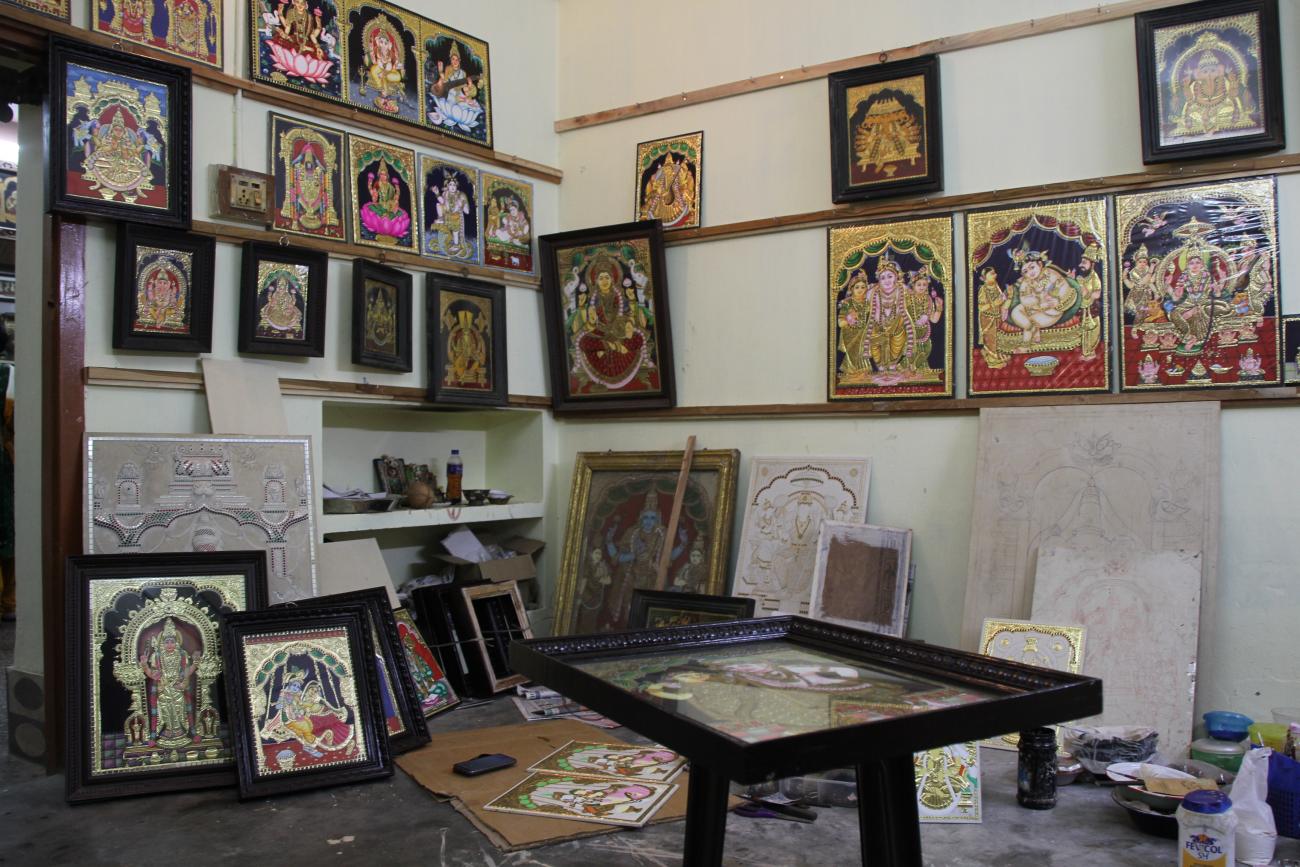I spent a week in Tamil Nadu travelling from Chennai to Madurai. Along the way I not only discovered ancient Hindu temples, a diverse colonial history and friendly people, but a large cultural art scene.
Veena Making

Listening to a traditional music performance you will see the veena, an interestingly shaped instrument with a distinct sound. The large guitar shaped instrument is made of a single block of woof from the jackfruit tree and has a metal dome towards the end. In Tanjore I was able to stop at a veena making shop, where it takes a month to finish one instrument between the skilled craftsmen.
Bronze Statue Making

Also, in Tanjore, I was able to see the traditional making of bronze statues. Many intricate statues are displayed in the Palace Museum and were found in archaeological digs of the huge Tanjore temple complex. It’s worth a visit to the museum before seeing how these huge statues used to be made. First the statue design is made from wax, then clay is set around the wax before the wax is melted away to create a perfectly detailed bronze caste. Finally, the bronze is melted into the clay caste and after cooling down, a beautiful bronze statue is created!
Silk saree weaving

India is known around the world for many incredible arts and crafts, but none are quite as enigmatic as the silk saree. Worn for thousands of years, saree fashion is always evolving. Although, gorgeous silk textiles made using the traditional method are still sought after by those who can afford it. Watching the methodical craft is spellbinding and can be seen across Tamil Nadu, however, I recommend the weavers of the Kalakshetra Foundation.
Clay pottery

Another ancient artform that has been well preserved in India is clay pottery. The pots are used for anything from water storage to utensils and animal figures. I had a go myself whilst staying at one of the CGH properties.
Kolam making

The making of Kolam by women in the morning is a ritualistic artform designed to bring a calm start to the day and symbolises the connection between the internal and external. The kolams are drawn on the threshold of a home or building and display symmetrical patterns which change according to the calendar. Traditionally drawn using rice batter, kolams would attract insects and birds, connecting them to the natural world. Now, rice flour or chalk is used for ease. Everywhere in Tamil Nadu you will see kolams drawn on thresholds, and if you rise early enough you will see these beautiful designs being made.
Gold painting

Native to Tanjore, the characteristic paintings with embellishments of gold and other materials originated in the 16th century. First a sketch is drawn on wooden planks, usually representations of Hindu gods and goddesses, then the colours are painted on. Gold leaf is then added to the painting to give a three-dimensional effect. The paintings used to be status symbols for the princes and wealthy who would display them proudly in their homes. It is possible to meet a gold painter and purchase one of their products if you so wish.
